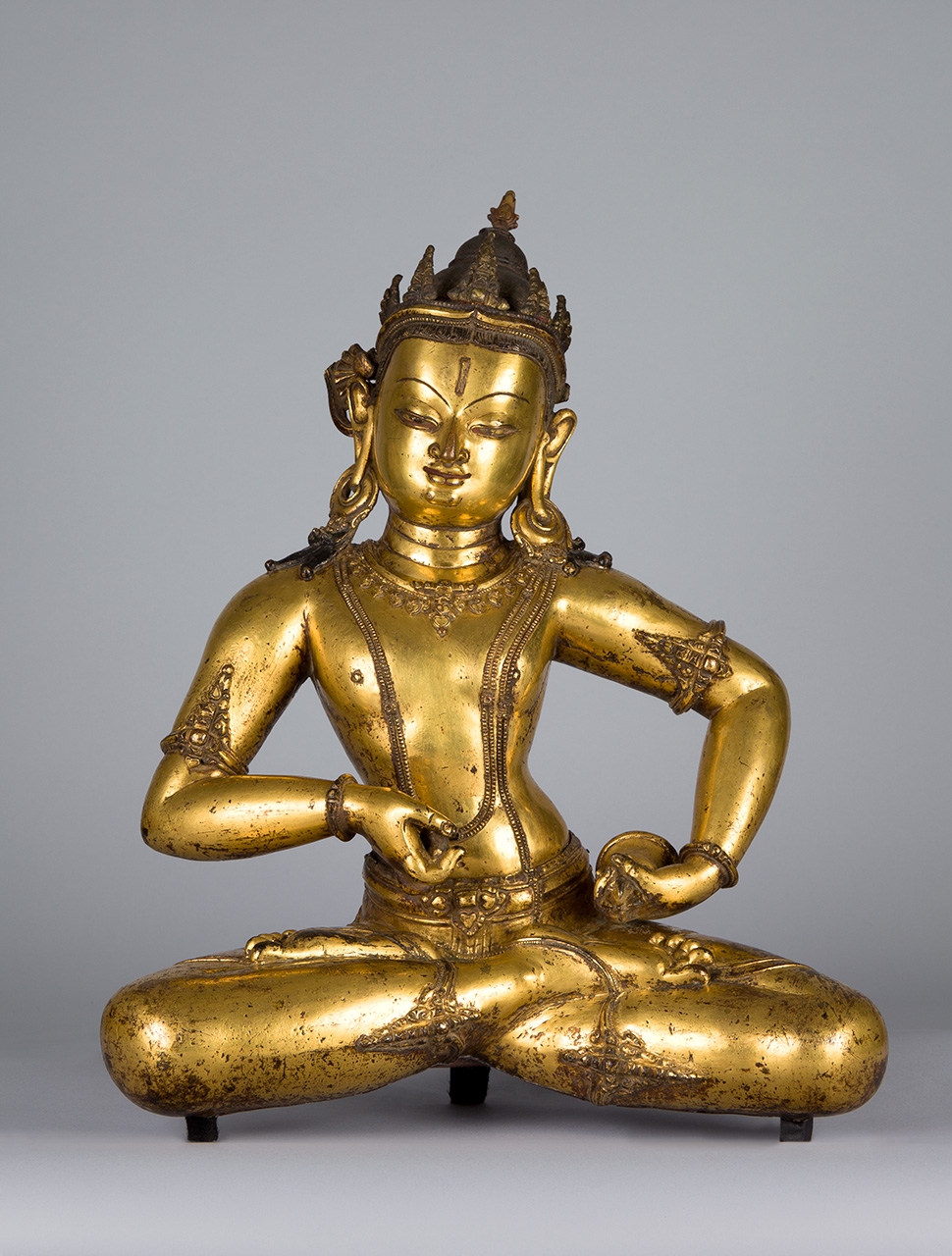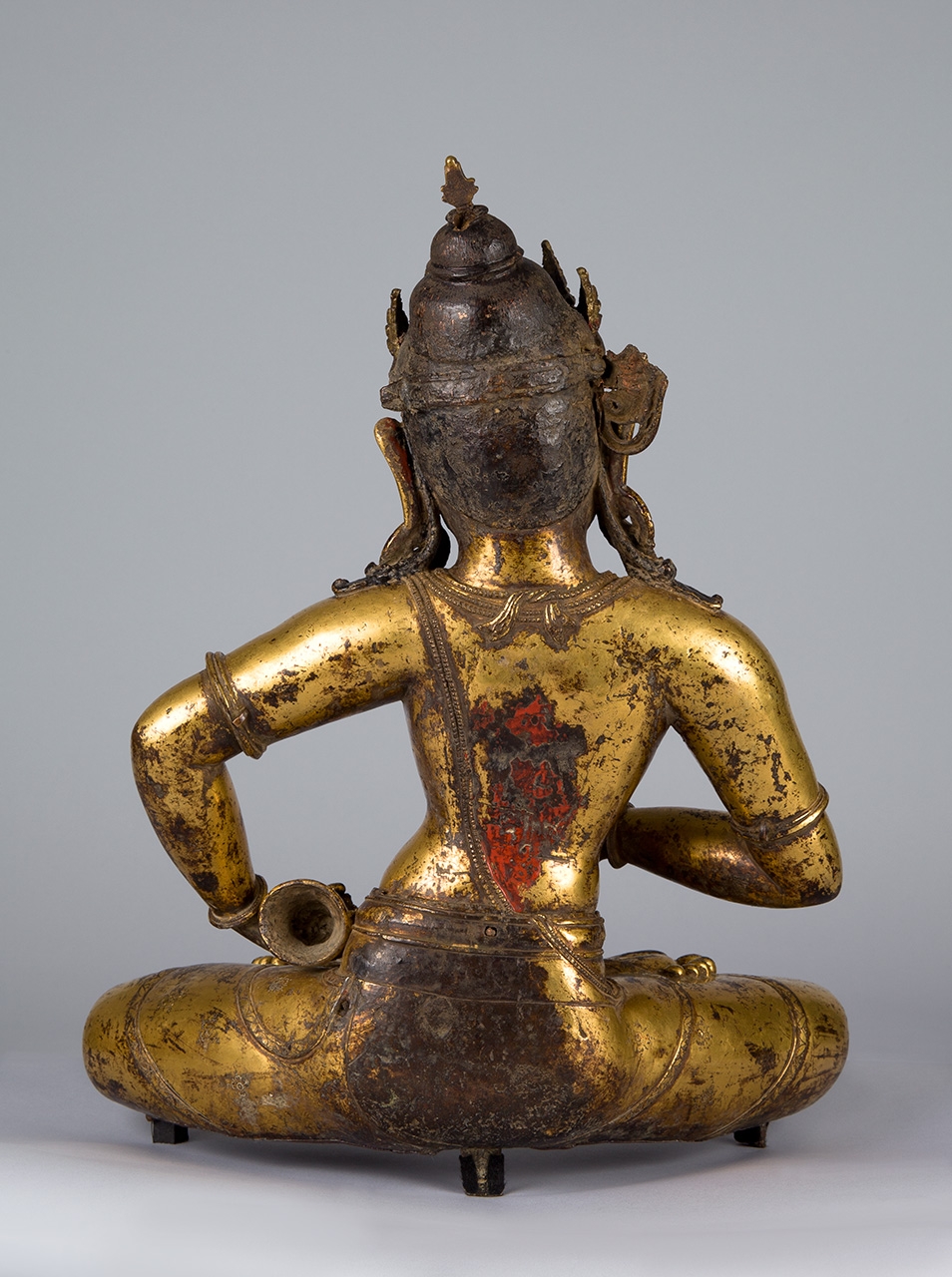
Vajrasattva is both a highly accomplished bodhisattva and a primordial buddha who is often invoked to purify the errors made during ritual and other religious practices. His name means “vajra being,” and he is the personification of the vajra, the most important ritual implement and symbol of Esoteric Buddhism. The vajra is a symbol of power and indestructability of the enlightened mind. This sculpture depicts the deity holding a bell at his waist and he would have once held a vajra in front of his chest with the tips of the thumb and index finger of his right hand.
This is an extremely elegant example of Nepalese sculpture. The figure’s well-proportioned body, with large head and strong limbs that bend as if he is dancing, swaying gracefully at the waist, perfectly combining feelings of movement and stability. Its gracefulness is further enhanced by the figure’s jewelry with its multiple strings of pearls and narrow pointed jewel clusters around the arms and legs, which mirror the spires of his crown. The helmet-like hairstyle with bud-shaped finial and the wide circular earrings with ornate bottom edges are further characteristic of Nepalese sculpture. This example is made up of several pieces that were cast separately and later welded together. The resulting joints were cleverly concealed within the figure’s ornaments, such as his armlets.
H 6 5/8 x W 4 3/4 x D 1 3/4 in.
C2005.16.10, HAR65432
- https://dev.rubinmuseum.org/images/content/742/c2005.16.10__zoom.jpg
- https://dev.rubinmuseum.org/images/content/742/c2005.16.10_back__zoom.jpg
- https://dev.rubinmuseum.org/images/content/742/c2005.16.10__zoom.jpg
- https://dev.rubinmuseum.org/images/content/742/c2005.16.10_back__zoom.jpg


